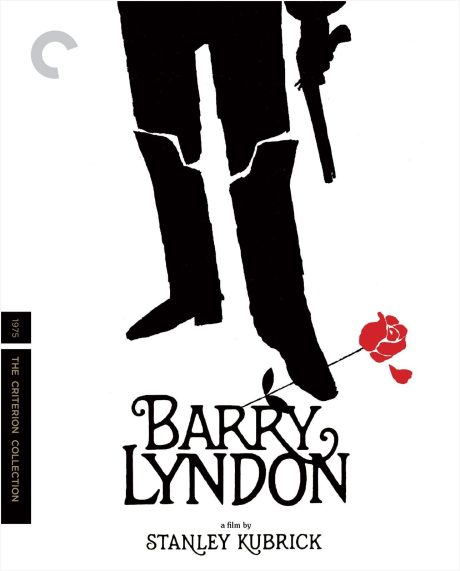
Sunk deep into the newly reholstered seats of the Duke of York’s cinema in Brighton, I watched Stanley Kubrick’s Barry Lyndon, the same place I used to visit as a student in the 1980s. This time I was with my 25-year-old son, who was just as mesmerised as I was. We stayed in an Airbnb near Devil’s Dyke, walking its chalky, wild slopes in the morning and evening light. The experience of the film seemed to bleed into the Sussex landscape. It is a film that makes you see nature and people anew, framing them as though they belong to a different world altogether.
The slow-moving camera, the painterly tableaux, the use of natural and candlelight, all contribute to a sense of ritualised performance. Watching it, I felt that Kubrick had created something like a Japanese Noh play, where passions are tightly contained within formal gestures. Barry Lyndon dispenses with psychological realism and instead shows us people as they might have appeared in the 18th century: beings shaped by ritual, hierarchy, passion, and chance.
The First Half: A Mesmerising Picaresque
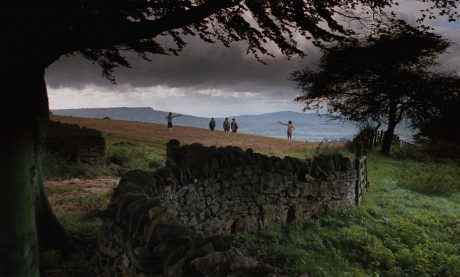
The first half of the film is a true picaresque, following the hapless Redmond Barry (played by Ryan O’Neal) as he flees Ireland after a duel, drifts into robbery, and signs up with the British army during the Seven Years’ War. Kubrick holds Irish politics lightly, but the background hum of dispossession and colonialism is always there.
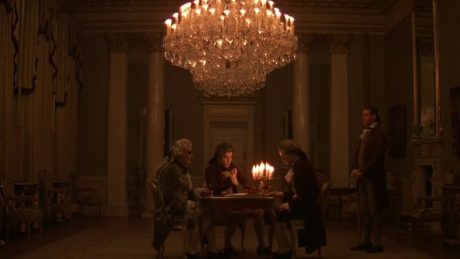
The battle sequences are stunning, but what lingers are not the glories of war but its random deaths: soldiers cut down in pointless skirmishes; the most moving moment being Barry’s lip-to-lip kiss to his dying friend as they lie in a ditch. Barry deserts, steals an officer’s identity, and is eventually pressed into the brutal Prussian army. In one extraordinary scene, he rescues the very man who persecuted him. Ambiguity permeates everything: is Barry a coward or a survivor, a villain or a victim? He is traumatised, breaking down during a spying mission, only to re-fashion himself once more.
The camera here is as important as the plot. Kubrick frames each sequence like a living painting, compositions influenced by Hogarth, Gainsborough, and the Dutch Masters (Ciment, 2003). John Alcott’s cinematography, with its celebrated use of NASA-designed Zeiss lenses, allowed Kubrick to film interiors by candlelight, creating a luminous, haunting atmosphere (Walker, 2000). The effect is to make each moment feel timeless, ritualistic, as though history itself were unfolding before our eyes.
The Second Half: Domestic Melodrama
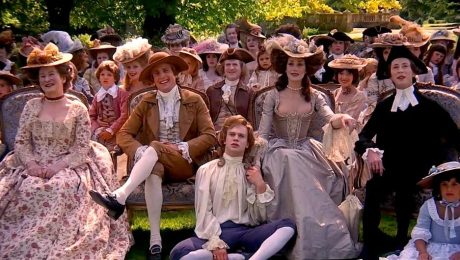
The second half of the film sees Barry marrying the wealthy Countess of Lyndon and assuming her title. Wealth and status do not bring happiness, however, and the tone shifts into domestic melodrama. Barry becomes an embittered father, devoted to his young son Bryan, feared and despised by his stepson Lord Bullingdon, and estranged from his silent, suffering wife.
Here we glimpse the seeds of Kubrick’s The Shining (1980). The embittered father, the beloved son, the alienated stepson, the spectral wife—the elements are eerily familiar. Yet in Barry Lyndon the horror is social rather than supernatural. Rituals of inheritance, duelling, and aristocratic pride replace the haunted hotel, but the effect is just as suffocating.
The climactic duel between Barry and Bullingdon is one of Kubrick’s greatest set-pieces. Again ritual frames passion: Bullingdon vomits with fear, Barry shows restraint, and the outcome is determined not by inner psychology but by social codes. The film closes with Barry maimed, pensioned off, a ghostly figure fading from the world he tried to inhabit.
A Cultural Materialist Reading
Watching the second half, I was reminded of my English tutor at Sussex, the amazing Professor John Barrell, whose The Dark Side of the Landscape (1980) and Poetry, Language and Politics (1988) showed how 18th-century art and poetry revealed the ideological structures of their age. For Barrell, people of that period were “constructed differently”: they were not modern psychological subjects but beings defined by passions, poverty, class, and ritual.
Kubrick captures this with eerie precision. Redmond Barry is not a coherent modern protagonist. He is a victim of his passions, his jealousies, and his poverty. He is also a patsy of history: pressed into armies, trapped by marriage, undone by class structures he can never quite transcend. Kubrick’s detachment, sometimes criticised as coldness, is part of the point. We are not asked to identify with Barry, but to observe how society shapes and destroys him.
Five Things I Learned from Barry Lyndon
1. Cinema can become painting
Kubrick’s greatest achievement in Barry Lyndon is to show how cinema can draw as much from painting as from narrative. Each frame resembles a still-life or history painting by Hogarth, Gainsborough, or Vermeer, composed with a balance of colour, gesture, and depth that feels timeless. The effect is not to heighten drama but to slow it down, to turn the story, particularly in the first part, into a series of tableaux where ritual and form carry as much meaning as plot. It is history experienced through posture and landscape rather than dialogue, and it makes you notice how much of human life is performed, staged, and choreographed.
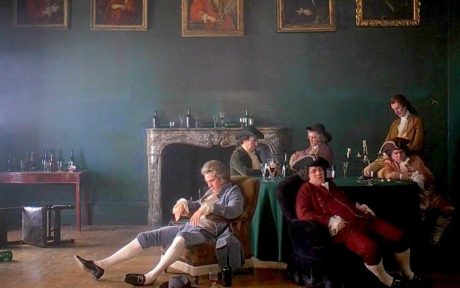
2. Light changes everything
The film is a masterclass in lighting. By filming with natural daylight and, most famously, by using NASA-designed Zeiss lenses to capture candlelit interiors, Kubrick and his cinematographer John Alcott reinvented what historical cinema could look like. The glow of a single flame against powdered wigs and gilt walls, or the muted grey of soldiers marching through fields, conveys a truthfulness that artificial studio lights could never create. The play of shadow and light becomes part of the storytelling: passion flickers, grief falls into shadow, and power is literally illuminated by how the sun or a candle falls across a face. Watching the film makes you notice light in your own life: the way a room changes with dusk, how a candle softens a gesture.
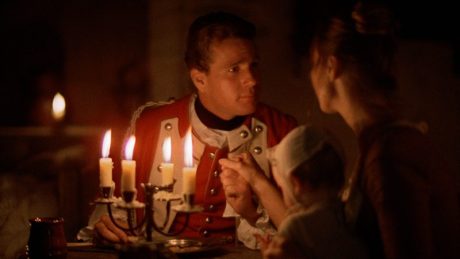
3. History makes character
Unlike most cinematic protagonists, Redmond Barry is not a psychologically coherent “modern” individual. He is tossed between armies, lovers, patrons, and rituals, constantly reshaped by the social and political forces around him. His poverty, his Irishness, the brutality of 18th-century warfare, the rigid codes of aristocracy: all these determine who he becomes more than any internal choice or will. What emerges is a reminder that personality itself is historical: we are all, to some extent, products of our time and place. Barry’s contradictions—charming rake, coward, survivor, husband, father, failure—are not weaknesses of characterisation but evidence of how society constructs identity differently across centuries.
4. Ambiguity is moving
One of the most haunting aspects of Barry Lyndon is its refusal to give us neat explanations. Death comes randomly, in muddy skirmishes where no one gains. Love is fleeting, jealousy destructive, loyalty fragile. The camera observes all this with an almost cruel detachment: slow zooms, wide landscapes, and silent pauses that prevent us from getting too close. Yet paradoxically, this very distance makes the moments of passion or tenderness — the dying kiss in a ditch, the breakdown during a spying mission– cut more deeply. By withholding psychological depth, Kubrick makes us feel the fragility of human life more acutely. Ambiguity, here, is not a lack but a source of piercing humanity.
5. Influence lasts
Though initially received coolly, the film’s influence has been enormous. Its painterly aesthetic shaped later historical dramas such as Brideshead Revisited, Merchant Ivory productions, and the works of Peter Greenaway, all of which adopted its emphasis on tableaux, ritual, and formal restraint. Television costume dramas from the BBC to Netflix owe much to Kubrick’s experiment in turning history into living art. The long zooms, candlelit interiors, and stately pacing have become visual shorthand for “serious” historical drama. More importantly, Barry Lyndon showed that cinema could find truth not in psychological realism but in form, light, and atmosphere—a lesson that continues to shape filmmakers today.
Conclusion
Barry Lyndon is not an easy film, especially in its second half, where the melodrama can feel airless. Yet even there, its beauty and ritual reveal how passion is contained, distorted, and ultimately destroyed by society. Seeing it again with my son, I felt how timeless it remains. It is a film that teaches us to look—at people, at landscapes, at history itself—with new eyes.
References
Barrell, J. (1980) The Dark Side of the Landscape: The Rural Poor in English Painting 1730–1840. Cambridge: Cambridge University Press.
Barrell, J. (1988) Poetry, Language and Politics. Manchester: Manchester University Press.
Ciment, M. (2003) Kubrick: The Definitive Edition. London: Faber and Faber.
Walker, A. (2000) Stanley Kubrick, Director: A Visual Analysis. London: W.W. Norton.
“Barry Lyndon.” (2025) Wikipedia. Available at: https://en.wikipedia.org/wiki/Barry_Lyndon [Accessed 17 August 2025].


Leave a Reply